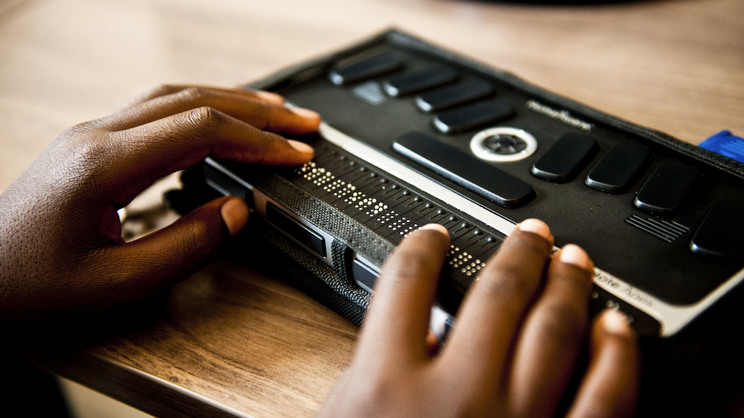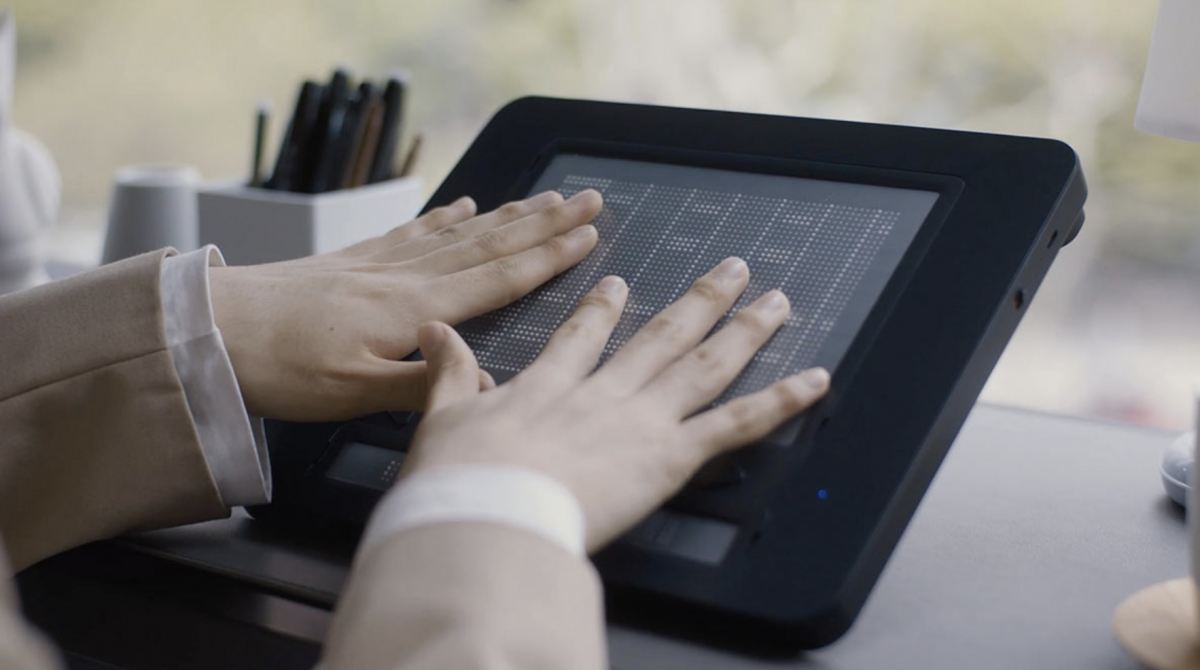Speech-to-Text Devices for Low Vision: Closing the Communication Gap
Speech-to-Text Devices for Low Vision: Closing the Communication Gap
Blog Article
Empowering Self-reliance With Assistive Innovation for the Blind
The assimilation of assistive innovation into the lives of individuals with aesthetic disabilities represents a considerable development in advertising independence and self-sufficiency. From cutting-edge screen visitors to innovative wise canes, these tools not only boost everyday navigating and communication however also encourage users to engage meaningfully in different facets of life. As we explore the myriad advantages and real-world applications of these modern technologies, it ends up being important to examine the hidden variables that add to their performance and the possibility for future advancements in this crucial field.
Overview of Assistive Innovation

The growth of assistive technology is grounded in concepts of inclusivity and empowerment. Innovations in software program, hardware, and sensory enhancements give users with options tailored to their specific requirements. From display readers that convert text to speech, to tactile tools that share information with touch, these devices change the means people engage with their environments.
In enhancement to sensible applications, assistive innovation cultivates higher social incorporation and participation in various industries, including education and learning and employment (Braille displays and notetakers). As study and development proceed to develop, the potential for assistive innovation to even more improve the lives of aesthetically damaged people remains appealing, paving the way for a much more equitable society where everybody can prosper
Sorts Of Assistive Devices
A selection of assistive devices have actually arised to support individuals with visual impairments, each created to meet certain requirements and boost daily performance. These gadgets vary from low-tech remedies to high-tech advancements, supplying diverse alternatives for customers.
Low-tech devices consist of magnifiers and large-print products that assist in analysis and writing. Braille tools, such as Braille stylus pens and slates, allow tactile reading and interaction. Orientation and wheelchair aids, like white canes, assist customers browse their setting securely.
On the higher end of the range, electronic magnification systems and display visitors provide significant assistance. Digital magnifiers permit customers to expand message and images on displays, while screen viewers convert digital material right into synthesized speech, helping with accessibility to information on smartphones and computers.
Smart device applications likewise play a critical role, providing functions like text recognition and navigating support. Wearable innovation, such as wise glasses outfitted with enhanced reality, is emerging as a promising device to boost situational understanding.
Advantages of Assistive Modern Technology
The combination of assistive modern technology considerably improves the lifestyle for individuals with visual impairments. These innovations equip customers by promoting independence, allowing them to browse their settings a lot more successfully and perform More hints daily jobs with better ease. Display visitors and zoom software program permit people to accessibility digital info, cultivating expert and educational possibilities that might have previously been review out of reach.
In addition, assistive devices such as clever walking sticks and general practitioners applications give real-time navigation help, improving mobility and security. This increased autonomy not just improves self-confidence but additionally urges social engagement, allowing individuals to take part even more completely in their neighborhoods.
Assistive technology additionally promotes interaction, helping customers get in touch with others via voice recognition and text-to-speech applications. This capacity is essential for keeping connections and accessing vital info.
Additionally, the customization options offered with several assistive innovations make sure that individuals can tailor devices to their particular demands, even more enhancing usability and performance. Generally, the benefits of assistive modern technology for people with aesthetic impairments are profound, promoting an extra inclusive society where everybody can pursue their goals and objectives.
Instance Research Studies and Success Stories
Highlighting the transformative effect of assistive modern technology, various instance studies illustrate exactly how individuals with aesthetic disabilities have actually successfully incorporated these tools into their lives. One engaging instance entails a college trainee who used display reading software to navigate on-line resources and scholastic materials properly. This technology not only facilitated her education and learning yet likewise enhanced her confidence in joining conversations and group jobs.
Another study includes a professional who employs a mobile phone application created for navigating and things recognition. By utilizing this app, he has gained back freedom in both his personal and work settings, enabling him to commute individually and involve with colleagues more efficiently.
Additionally, a retiree shared her experience with braille e-readers, which allowed her to access a substantial array of literature and stay gotten in touch with her neighborhood through book clubs.
These success tales highlight the essential role of assistive technology in fostering self-reliance, enhancing top quality of life, and advertising social integration for people with aesthetic impairments (Braille displays and notetakers). By accepting these cutting-edge tools, customers can conquer obstacles and confiscate opportunities that add to their individual and specialist satisfaction
Future Trends in Assistive Innovation
Technology in assistive innovation is poised to redefine the landscape of assistance for people with aesthetic problems. Emerging trends emphasize the assimilation of fabricated intelligence (AI) and machine understanding, which boost the performance of gadgets that help with navigating and information accessibility. AI-driven applications are now capable of analyzing visual information my site in real-time, enabling users to involve with their environment more independently.
Furthermore, the advancement of wearable innovation is advancing quickly. Smart glasses geared up with increased fact (AR) can supply audio summaries of environments, transforming how individuals communicate with public spaces. These devices not only advertise freedom yet also foster social inclusion.
Furthermore, the Internet of Things (IoT) is making homes smarter, allowing for seamless connectivity in between day-to-day appliances and assistive tools. This connection encourages individuals by making it possible for automatic actions and voice-activated controls customized to private demands.
Final Thought
Finally, assistive technology plays a critical function in encouraging people with aesthetic problems by improving their independence and interaction with their surroundings. The varied variety of devices and applications offered not just promotes navigation and interaction however also advertises social assimilation and opportunities for expert and personal development. As developments continue in this field, the potential for boosting the quality of life for those with aesthetic disabilities will increase, cultivating better autonomy and empowerment.

Report this page